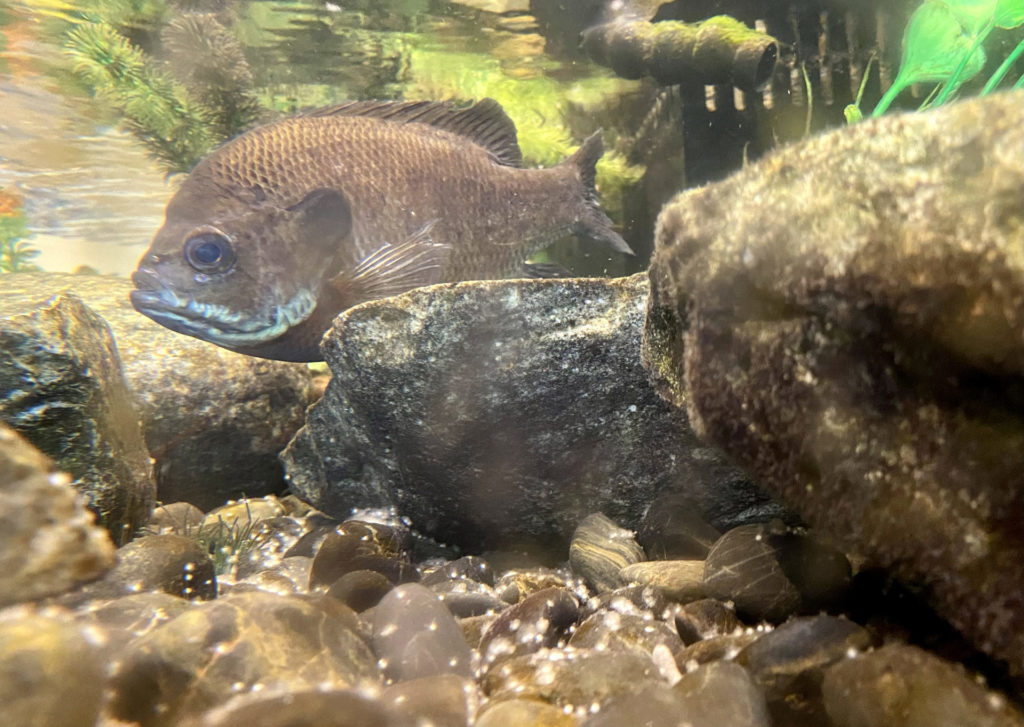 For the first time, the bluegills have spawned in the stream tank in the Watershed Center’s Discovery Center.
For the first time, the bluegills have spawned in the stream tank in the Watershed Center’s Discovery Center.
“He is circling above the eggs, inspecting them and moving them around to keep them oxygenated,” said Watershed Fellow Kate Hode. “He is very protective and territorial about this section of the tank. Like any sleepless dad, he’s kind of ratty looking right now.”
Before Father’s Day on Sunday, consider the male bluegill’s parenting challenges. This dude has a parenting gig where he lives in captivity and fends off predators 24/7!
Bluegill males create nests in shallow depressions, court females, and then shoo them away once the eggs are laid. In a bluegill equivalent of dutiful fatherhood, the males then take over the hatching process.
Tiny eggs, about the size of rock salt, dust the river stones on the bottom of the tank. A watchful, if slightly weary, male bluegill has been hovering over his brood since Wednesday morning when the Watershed staff first discovered the eggs.
“We’re just as eager as anyone to see if the eggs will hatch and survive,” said Education Director Jeff Hoagland. “This is nature so you never know. We’ve never had this happen before in our stream tank.”
 The breeding season starts in April and, in the wild, the males will use their tail to make a saucer-shaped depression in the sand. Males grunt and swim in circles to attract females. If a female is interested, they circle each other before coming to rest in the center of the nest and touching bellies to begin the process of releasing and fertilizing the eggs. This occurs several times and ends up with females laying between 10,000-60,000 eggs. Bluegills are native in the eastern U.S.
The breeding season starts in April and, in the wild, the males will use their tail to make a saucer-shaped depression in the sand. Males grunt and swim in circles to attract females. If a female is interested, they circle each other before coming to rest in the center of the nest and touching bellies to begin the process of releasing and fertilizing the eggs. This occurs several times and ends up with females laying between 10,000-60,000 eggs. Bluegills are native in the eastern U.S.
“Bluegills are very attentive fathers,” Kate said. “They spend much of their time fanning their eggs with their pectoral fins to prevent the buildup of silt and guarding them from predators. He is very vigilant and wants to keep away the green sunfish and largemouth, bass, who is the tough guy of the tank.”
In the wild, the male continues to guard any hatchlings for another 5-10 days until they can swim.
If these eggs hatch, which usually occurs in 1-6 days, the tentative plan is to move any surviving babies into a smaller tank.

